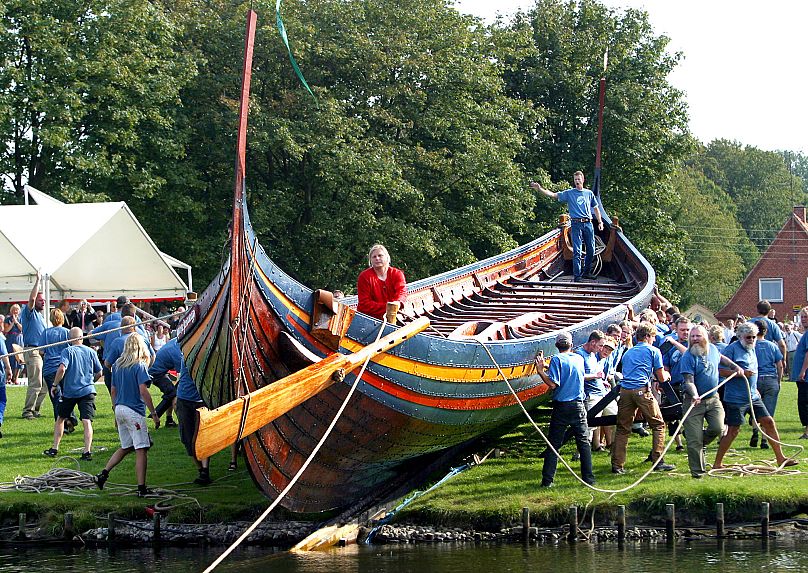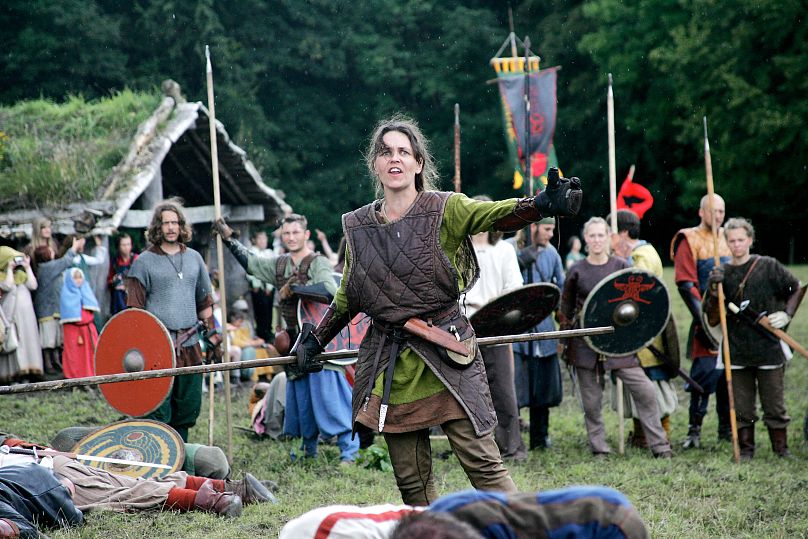Danish researchers say fragments of glass found across Northern Europe suggest Vikings were more sophisticated than pop culture would have us believe.
When you think of a Viking, what image comes to mind?
The Norse invasion of pop culture in recent years has taught us that the Vikings were rugged outdoorsmen who pillaged their way through Europe wearing furs and swinging swords.
But the more historians learn about the actual Vikings, the more apparent it becomes that our perception of the Nordic warriors is mostly wrong.
Real-life Vikings likely sat indoors discussing business, in rooms that let light in from outside through glass-paned windows, according to Danish researchers.
That’s right, apparently Vikings had windows.
The discovery was surprising for Danish researchers, as windows were usually only associated with medieval churches and castles.
The fragments of glass from Viking windows they discovered in northern Europe date back from long before the castles and churches of the Middle Ages, they said.
“This is yet another shift away from the image of unsophisticated barbaric Vikings swinging their swords around,” said Mads Dengsø Jessen, a senior researcher with the National Museum in Copenhagen.
Windows for a “colourful inflow of light”
Over the past 25 years, archeologists have found glass fragments in six excavations in southern Sweden, Denmark and northern Germany.
In Copenhagen, 61 fragments of glass panes were analysed; researchers concluded the pieces of glass dated from between the year 800 and 1100. The Viking Age is considered to have lasted from 793 to 1066.
“We only associated early window glass with the Middle Ages, therefore assuming that the glass could not originate from the Viking Age,” the National Museum said in a statement.
But these glass fragments “can be dated to the Vikings Age and most likely must have been in use in that time period as well,” said Torben Sode, a conservator with the museum who first connected the dots.
So does that mean Vikings were sitting inside gazing longingly towards the horizon? Not quite.
The museum said the glass windows were for the upper echelons of society and religious use, much like the rest of Europe.
Dengsø Jessen said there may have been glass windows in the Vikings’ vast hall buildings, but they were not the large, transparent windows we know today.
Researchers believe they were probably smaller windows, possibly made of flat pane glass in different shades of green and brown. The idea wasn’t to be able to look out, but to create a colourful inflow of light into the building.
The museum said the Vikings most likely obtained the glass through trade – the Norsemen known as vikings were involved in large-scale raiding, colonising, conquest and trading throughout Europe and even as far as North America.
“In fact, we are talking about a cultivated Viking elite with royal power that equaled that, for example, of Charlemagne, king of the Franks. This is something that is often omitted in the simplistic Hollywood portraits of Vikings,” Dengsø Jessen said.













